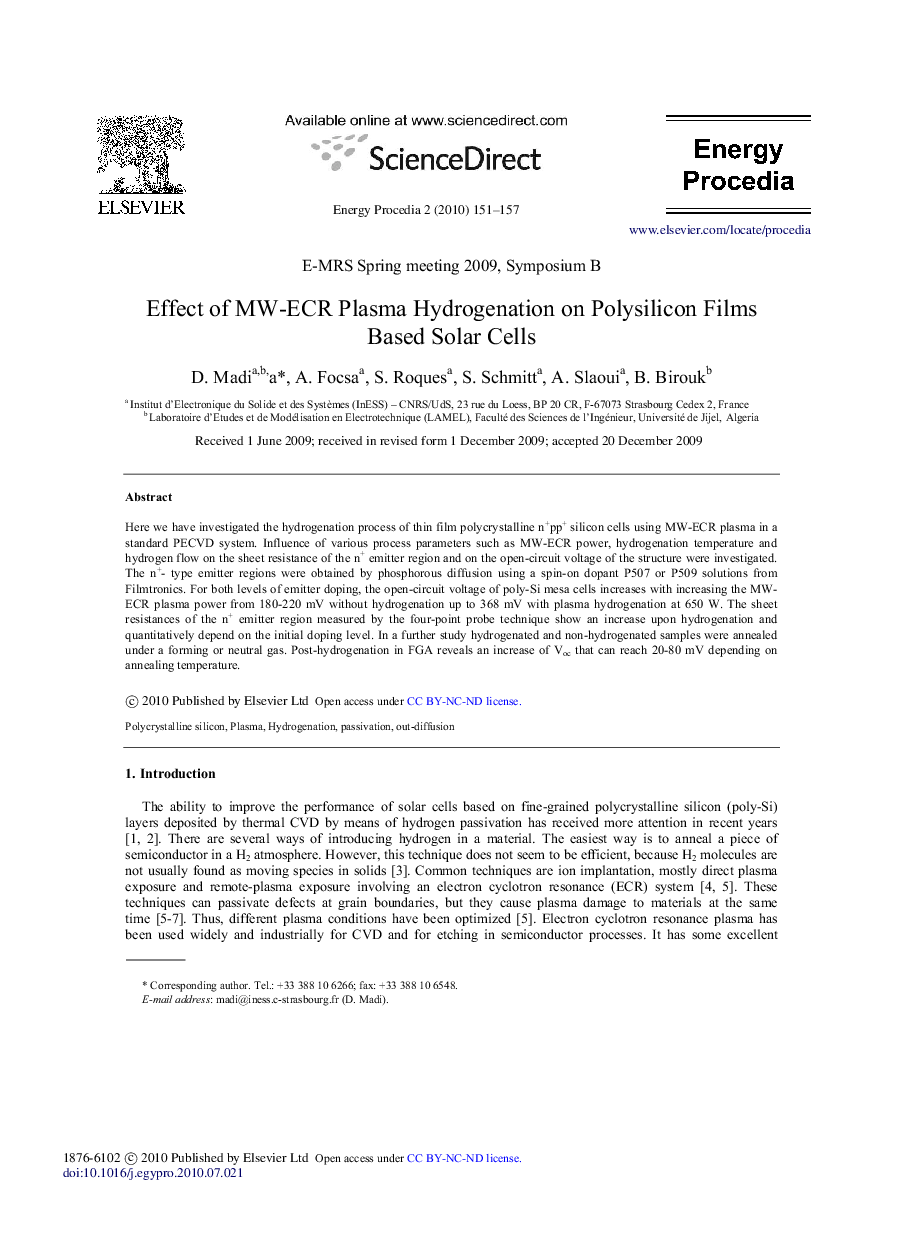| Article ID | Journal | Published Year | Pages | File Type |
|---|---|---|---|---|
| 1515084 | Energy Procedia | 2010 | 7 Pages |
Here we have investigated the hydrogenation process of thin film polycrystalline n+pp+ silicon cells using MW-ECR plasma in a standard PECVD system. Influence of various process parameters such as MW-ECR power, hydrogenation temperature and hydrogen flow on the sheet resistance of the n+ emitter region and on the open-circuit voltage of the structure were investigated. The n+- type emitter regions were obtained by phosphorous diffusion using a spin-on dopant P507 or P509 solutions from Filmtronics. For both levels of emitter doping, the open-circuit voltage of poly-Si mesa cells increases with increasing the MW-ECR plasma power from 180-220 mV without hydrogenation up to 368 mV with plasma hydrogenation at 650 W. The sheet resistances of the n+ emitter region measured by the four-point probe technique show an increase upon hydrogenation and quantitatively depend on the initial doping level. In a further study hydrogenated and non-hydrogenated samples were annealed under a forming or neutral gas. Post-hydrogenation in FGA reveals an increase of Voc that can reach 20-80 mV depending on annealing temperature.
